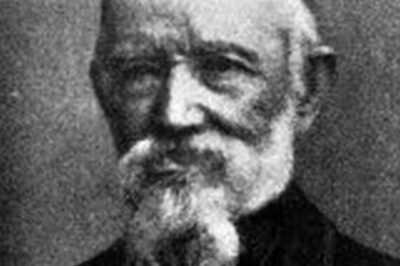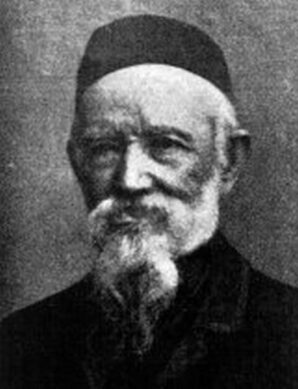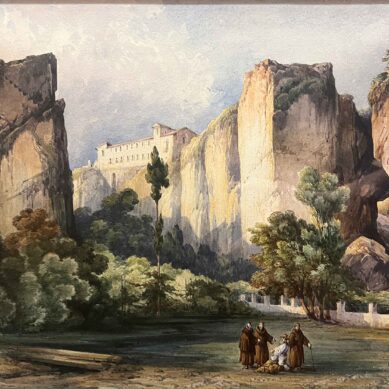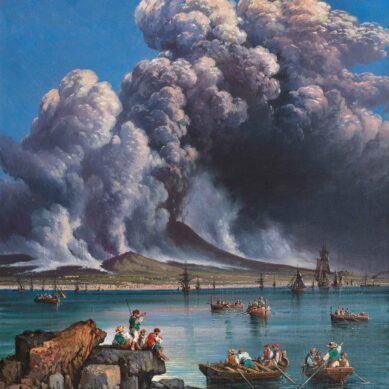You searched
Painter
Gonsalvo Carelli
Are you interested in the sales or the purchase of his artworks?
We buy works of this artist
and of other painters and sculptors from the 16th century to the first half of the 20th century
The Berardi gallery offers a free and without obligation service for evaluation of ancient and modern art . To find your way in the art market, very complex and full of nuances, it is better to rely on a professional consultant who can answer fast and concretely to your needs. The clarity of the answers will resolve effectively the need to estimate or sell an asset.
Contact us immediately without commitment
Answers also in 24 hours:
Gonsalvo Carelli
Gonsalvo Carelli
He was born in Naples in 1818 and was introduced to painting by his father Raffaele, a Vedutist. Very precocious, he exhibited for the first time at the age of twelve at the Bourbon Exhibition of 1830. Three years later, he presented nineteen landscape studies in watercolour drawings, including La piazza di Vicaria, which Queen Isabella bought.
He perfected his watercolour technique first with his father and then with the Englishman William Leight, who introduced him to the practice of painting from life. The link with the stylistic elements of the Posillipo School is immediately evident, not only in his choice of themes, but also in the freedom and airiness of his views.
Soon, thanks to the protection of various noble Neapolitan families, such as the Meuricoffre, he received a series of commissions and awards at Bourbon exhibitions. In 1835 he exhibited The Elysian Fields at Bacoli, Temple of Serapis, View of Castel Capuano, View of the Arco Felice, View of the Posillipo Fort and View with the Torre della Polveriera at Posillipo. These were the last watercolours he exhibited in Naples and in which he still signed himself “Carelli son”, before leaving for Rome on a pension.
His stay in Rome was invaluable for Consalvo, as he was able to study the masters of the 17th century and above all go into the Roman countryside to paint en plein air, comparing himself with foreign artists. He frequented the students of the Academy of France, where he met Bartolomeo Pinelli and Horace Vernet, the then director of the institute. Roman views such as Veduta di Roma preso da Monte Mario (View of Rome from Monte Mario), Veduta della campagna romana con figure ed armenti (View of the Roman countryside with figures and herds) and Veduta del Tempio della Sibilla a Tivoli (View of the Temple of the Sibyl at Tivoli) date from this period.
Between 1841 and 1844 he moved to Paris where he exhibited at the Salons of 1842 and 1843 and where he formed important relationships that won him commissions from English lords and French dukes. Having won several gold medals at the Salons, he returned to Naples almost triumphant: the Russian Count Potoky ordered two Neapolitan views for the Tsar.
This resulted in two of Carelli’s most important works, Naples from the Royal Gardens of Portici and Naples from the Camaldoli, both of which are now in the Hermitage in St Petersburg. His stay in Milan in 1848 saw him take an active part in the insurrectionary climate, as he took part in the Five Days of Milan and then the battles on the Volturno. Despite this, he continued to paint, sending three views of Amalfi and the Neapolitan Gulf to the Neapolitan exhibition in 1848.
On his return to Naples, he illustrated Alexandre Dumas’ father’s text Da Napoli a Roma and exhibited a series of oval views at the Bourbon exhibition of 1851. La valle di Roveto sul Liri and Una veduta da Santelmo appeared at the 1862 National Exhibition in Naples, while at the 1877 Exhibition he sent views of Rome, such as Un uragano sopra la città di Roma, such as Il belvedere della Zisa a Palermo. In the 1860s he was involved in the production of an album of sixteen drawings on the history of banditry in southern Italy, now kept in the Royal Library in Turin. He was appointed academician of San Luca in 1874 and continued to paint and exhibit until the end of his life.
At the end of the 1880s, he illustrated Vincenzo Bindi’s book Monumenti storici ed artistici degli Abruzzi. The historian Bindi, having married Consalvo Carelli’s daughter, then set up the Bindi picture gallery in Giulianova, which is full of paintings by Consalvo, Raffaele and Gabriele Carelli and other representatives of the Posillipo School.
Elena Lago







